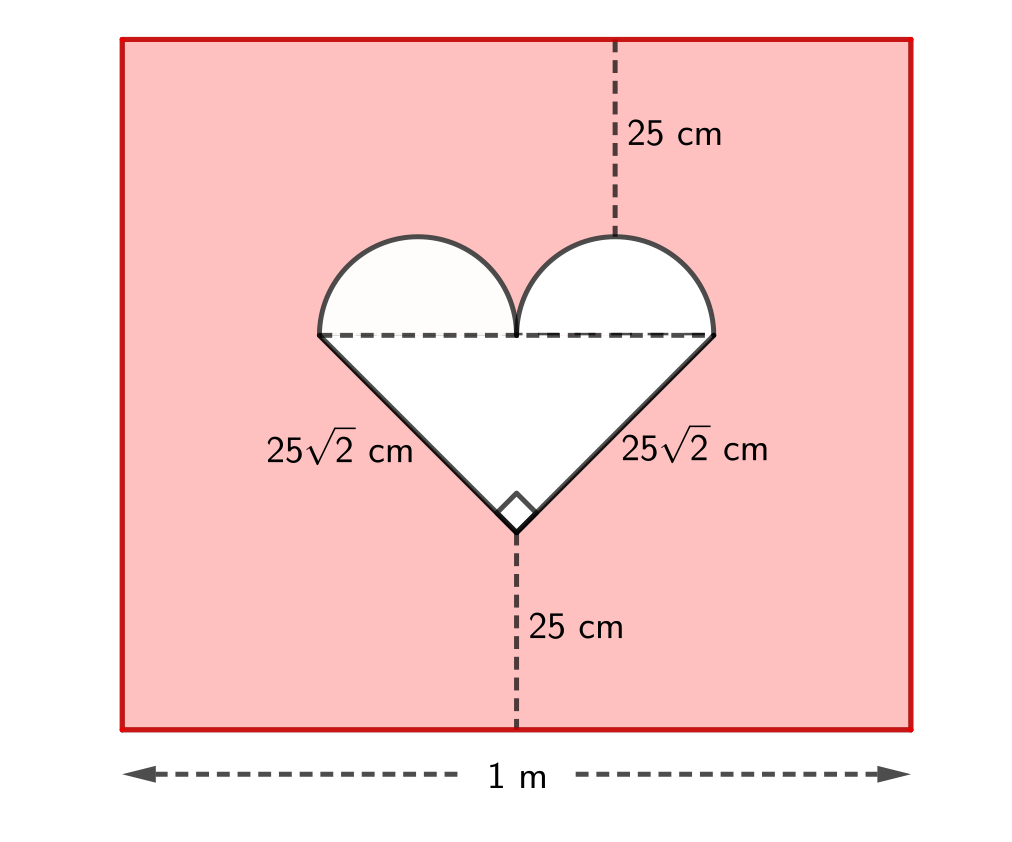

Problem of the Week
Problem E
Cupid’s Arrow
At a Valentine’s dance, contestants can participate in a game. They are blindfolded and spun around. They then try to place an arrow on a white heart on a red gameboard. (See the diagram below.) The heart was constructed by attaching two white semi-circles onto the hypotenuse of an isosceles right-angled triangle. Each semi-circle has the same diameter, equal to half the length of the hypotenuse. The heart was then pasted onto a large rectangular sheet of red paper such that the hypotenuse of the triangle is parallel to the base of the rectangle. We know the following measurements:
The distance from the top of a semi-circle to the top of the rectangle is 25 cm.
The distance from the bottom vertex of triangle to the bottom of the rectangle is 25 cm.
The length of each equal side of the triangle is \(25{\sqrt 2}\) cm.
The length of the base of the rectangle is 1 m.
(The dashed lines, the length measurements and the right angle symbol will not actually be on the finished gameboard.) If a contestant places their arrow randomly somewhere on the gameboard, what is the probability that it will land on the white heart?

Note: To solve the problem, it may be helpful to use the following fact:
In an isosceles triangle, the line joining the vertex opposite the unequal side to the midpoint of the unequal side will be perpendicular to the unequal side.